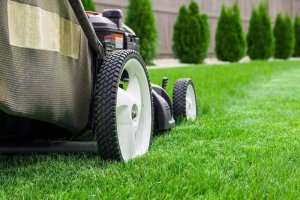How to Care for Your Winter Lawn

The reason behind prepping your lawn during the autumn time frame is to ensure that your grass is as strong and healthy as possible to withstand the harsher weather. Although the Perth winter is relatively warm compared to other regions in Australia and overseas, preventive care is so much easier than dealing with out of control weeds and root damage in the spring.
PRE-WINTER LAWN CARE DURING AUTUMN
- Maximise available sunlight. Your lawn needs air and sunlight to remain green. Chlorophyll is chemical presence that converts sun energy into the essential food needed by grass to remain healthy. When the daylight and temperature decline, it is important to remove fallen leaves and grass clippings so that your lawn can get the maximum amount of available sunlight.
- Increase the height of mowed grass. Grass grows slower as the temperature gets cooler. To avoid robbing your grass of essential nutrients, which can cause the grass to turn brown and allow weeds to overtake the lawn, raise the level of your lawn mower to at least 2.5cm.
- Aerate or de-thatch the lawn. Warm weather, accumulated grass clippings, and lots of foot traffic can compact the soil, interfere with the water flow, and leave a layer of dried clippings, called thatch, on the ground surface that restricts the amount of air and sunlight that your lawn gets. A thin layer of thatch can serve as mulch for the underlying grass, but a thick layer actually chokes and kills healthy grass.
- Aerating your lawn during the peak growing season will loosen the soil so that the ground can breathe. Early autumn is ideal for cool weather grasses.
- De-thatching your lawn with a special rake designed to pull up the thatch laying on top of your lawn. Removing this layer of thatch lets your healthy grass receive the oxygen and sunlight needed to remain healthy.
- Prune overgrown trees and bushes. Overgrown tree limbs and bushes cast a shadow on the grass below and prevent available sunlight from reaching the lawn. Before the grass starts to show signs of browning or dying, prune back overhanging tree limbs and oversized bushes during the autumn lead up to winter.
- Kill weeds before they spread. Broadleaf weeds love the colder weather because they can spread their roots while the strength of your lawn is at its weakest. Brunnings Feed and Weed, available here at Bibra Lake Soils, is the perfect landscaping supply to strengthen your lawn while destroying the ability of weeds to germinate. This product is the best of both lawn care, pre-winter maintenance.
LAWN CARE TASKS DURING WINTER
- Mowing frequency. During the winter months, when grass grows at a substantially slower rate, the lawn will only require mowing once every 3 weeks or once a month. Keep the grass height about 5-6cm to retain a pleasing display and avoid having a spiky appearance.
- Seed planting. If your lawn has areas that has thinning, brown patches, or it is in need of reseeding, winter is the ideal time to sow new seeds. If you have already spread a weed killer over your lawn in the autumn season, winter is the perfect time for seed sowing while weeds are not available to impede the rooting germination process of new grass.
- Fertilising. While your grass is growing at a slower rate, it still needs nutrients to remain healthy during the winter months. Take advantage of the winter season to keep your lawn well fed. The type of fertiliser you need will depend on the type of grass you have. To find out if your lawn will benefit from one of the Brunnings lines of lawn products, or a Multi Grow soil nutrient, or an Aussie Organics soil conditioner, bring in a sample of your lawn’s grass, and one of our lawn and soil specialists will be happy to help you find exactly what your lawn requires.
- Racking leaves and grass clippings. Even though you racked up the fallen leaves and removed the top layer of thatch during the autumn season, you will need to repeat this cleanup routine as more leaves fall and after each lawn mowing during winter.
NEED HELP?
Still have questions on what products you need, or need help on how to organise your winter lawn care schedule? Not a problem. Just call Bibra Lake Soils on (08) 9434 2290, or stop by and chat with one of our local lawn and garden specialists. We are here when you need us.



